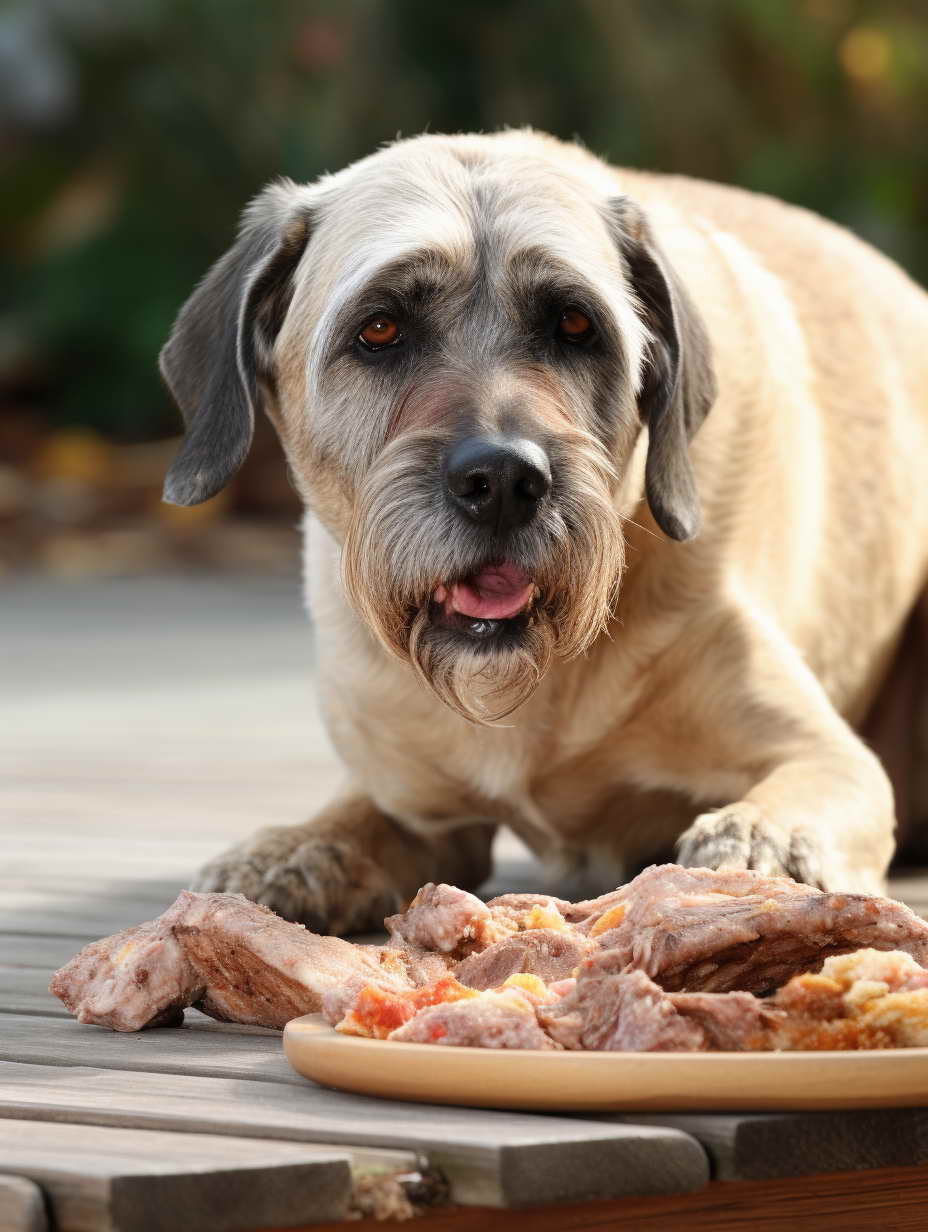The Pros And Cons Of Raw Dog Food – Is It Right for Your Canine Companion?
Introduction
Raw dog food, a diet consisting of uncooked meat, bones, and vegetables, has gained popularity among pet owners in recent years. Advocates claim it offers numerous benefits, while critics raise concerns about safety and nutritional balance. In this article, we’ll delve into the world of raw dog food and explore its pros and cons to help you make an informed choice for your four-legged companion.
Is Raw Dog Food Right for Your Pup?
Before we dive into the specifics, let’s address the fundamental question: Is raw dog food suitable for your beloved pet? Like any dietary choice, it comes with its own set of advantages and disadvantages. Let’s break them down.
The Pros And Cons Of Raw Dog Food
The Pros of Raw Dog Food: Unlocking the Benefits
Raw dog food has garnered attention and a dedicated following of pet owners who swear by its numerous advantages. Let’s dive deeper into the benefits of feeding your canine companion a raw diet:
1. Improved Coat Health
One of the most noticeable benefits of a raw dog food diet is the improvement in your furry friend’s coat health. The reason behind this is simple: raw meat is rich in essential fatty acids and natural oils. These nutrients contribute to a shinier, healthier coat, reducing excessive shedding and leaving your dog looking radiant.
2. Enhanced Dental Health
Chewing on raw bones is akin to a natural toothbrush for dogs. The abrasive texture of bones helps scrape away plaque and tartar, leading to improved dental health. By incorporating raw bones into your dog’s diet, you can help prevent common dental issues and enjoy the added bonus of fresher breath.
3. Increased Energy and Vitality
Many pet owners who transition to a raw dog food diet report a significant increase in their furry companion’s energy levels and overall vitality. Dogs become more active and playful, which can be particularly noticeable in older dogs that may have experienced a decline in energy over the years.
4. Potential Allergy Relief
Food allergies and sensitivities can be a source of discomfort for dogs, leading to issues like skin irritation, itching, and gastrointestinal problems. Raw diets eliminate many common allergens found in commercial dog food, potentially providing relief for dogs with sensitivities.
5. Better Weight Management
Maintaining an optimal weight is crucial for your dog’s health and longevity. Raw diets are often lower in carbohydrates and fillers compared to commercial kibble, making them an excellent choice for weight management. Dogs on raw diets are less likely to become overweight or obese.
6. Smaller, Less Odorous Stools
Raw food is highly digestible, resulting in smaller and less odorous stools. This is not only beneficial for your dog but also makes cleanup easier for pet owners. Say goodbye to the overwhelming smell of traditional dog waste!
7. Strengthened Immune System
Proponents of raw dog food argue that it can boost your dog’s immune system. A robust immune system helps your pet fight off infections and illnesses more effectively, leading to fewer visits to the vet and a healthier, happier pup.
8. Enhanced Muscle Development
The high protein content in raw meat supports muscle growth and maintenance, particularly in active dogs. If your dog is an athlete or simply enjoys being active, a raw diet can help ensure they have the necessary nutrients for strong muscles.
In conclusion, the pros of raw dog food are impressive and appealing to many pet owners. From a shinier coat and improved dental health to increased energy and potential relief from allergies, the benefits are numerous. However, it’s essential to weigh these advantages against the potential drawbacks, such as bacterial contamination and the need for a well-balanced diet. Always consult with your veterinarian before making any significant changes to your dog’s diet to ensure it’s the right choice for your furry friend.
The Cons of Raw Dog Food: Navigating the Drawbacks
While raw dog food enthusiasts emphasize its benefits, it’s essential to consider the potential drawbacks and challenges associated with this diet. Let’s explore the cons of feeding your canine companion raw food:
1. Risk of Bacterial Contamination
Raw meat, including poultry and beef, can harbor harmful bacteria like Salmonella and E. coli. These pathogens pose health risks not only to your dog but also to you and your family members. Handling raw meat demands strict hygiene practices to minimize the risk of contamination.
2. Nutritional Imbalance
Creating a well-balanced raw diet for your dog can be challenging. Without proper planning and knowledge, your pet may not receive all the essential nutrients they need for optimal health. Imbalances in vitamins, minerals, and other nutrients can lead to health issues in the long run.
3. Potential Choking Hazard
While chewing on raw bones can benefit dental health, it’s not without risks. If not adequately supervised or if the bones are too small or brittle, they can pose a choking hazard or cause dental fractures in dogs. Proper bone selection and supervision are crucial.
4. Cost and Convenience
Feeding your dog a raw diet can be significantly more expensive than traditional commercial dog food. The cost of quality meat, bones, and supplements can add up quickly. Additionally, raw feeding requires careful meal preparation and storage considerations, which can be less convenient for busy pet owners.
5. Transition Difficulties
Not all dogs adapt smoothly to a raw diet. Some may experience gastrointestinal upset during the transition, including diarrhea or vomiting. It can take time for their digestive systems to adjust to the new diet, and it may not be suitable for all dogs.
6. Food Safety Concerns
Feeding raw dog food necessitates rigorous food safety practices. You must store and handle raw meat correctly to prevent bacterial contamination. This added responsibility can be a burden for some pet owners.
In conclusion, the cons of raw dog food should not be overlooked when considering this dietary option for your pet. While the potential benefits, such as improved coat health and increased energy, are enticing, they must be weighed against the risks and challenges. It’s essential to consult with a veterinarian or canine nutritionist before switching to a raw diet to ensure that your dog’s nutritional needs are met and that you can provide a safe and balanced diet. Ultimately, the decision should be made with your dog’s well-being and specific dietary requirements in mind.

FAQs
Can I feed my dog exclusively raw food?
Yes, some pet owners choose to feed their dogs a completely raw diet, while others incorporate it as a supplement to their regular food.
Are there any specific meats I should avoid in a raw diet?
It’s generally recommended to avoid feeding your dog pork or wild game, as these meats can carry parasites.
How do I ensure my dog gets all the necessary nutrients on a raw diet?
Consult with a veterinarian or canine nutritionist to create a well-balanced raw diet plan that meets your dog’s specific needs.
Is raw dog food suitable for puppies?
Raw diets can be suitable for puppies, but it’s crucial to ensure they receive all the essential nutrients for growth and development.
What are the signs of foodborne illness in dogs?
Watch for symptoms like vomiting, diarrhea, lethargy, and loss of appetite, and consult a vet if you suspect foodborne illness.
Can I make my own raw dog food at home?
Yes, many pet owners prepare raw dog food at home, but it’s essential to follow recipes and safety guidelines closely.
Conclusion
In the world of pet nutrition, the pros and cons of raw dog food are subject to ongoing debate. While it offers potential benefits like improved coat health, dental hygiene, and increased vitality, it also carries risks such as bacterial contamination and nutritional imbalance. Ultimately, the decision to feed your dog raw food should be made with careful consideration of your pet’s specific needs and consultation with a veterinarian. Remember, every dog is unique, and what works best for one may not be suitable for another.

Leave a Reply